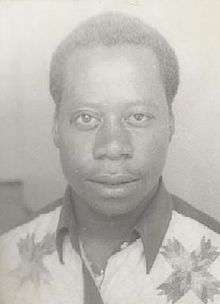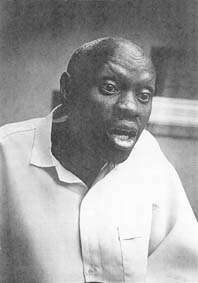Radio Télévision Libre des Mille Collines
| Rwandan genocide |
|---|
|
Parties responsible |
|
Resources |
Radio Télévision Libre des Mille Collines (RTLM) was a Rwandan radio station which broadcast from July 8, 1993 to July 31, 1994. It played a significant role during the April–July 1994 Rwandan Genocide.
The station's name is French for "Thousand Hills Free Radio and Television", deriving from the description of Rwanda as "Land of a Thousand Hills". It received support from the government-controlled Radio Rwanda, which initially allowed it to transmit using their equipment.[1]
Widely listened to by the general population, it projected racist propaganda against Tutsis, moderate Hutus, Belgians, and the United Nations mission UNAMIR. It is widely regarded by many Rwandan citizens (a view also shared and expressed by the UN war crimes tribunal) as having played a crucial role in creating the atmosphere of charged racial hostility that allowed the genocide to occur. A study by a Harvard University researcher estimates that 9.9% of the participation in the genocidal violence was due to the broadcasts. The estimate of the study suggests that approximately 51,000 deaths were caused by the station's broadcasts.[2] However, that study was based on a measure of radio reception, rather than a direct measure of how many people listened to the broadcasts. A subsequent study from researchers in Sweden found no statistically significant relationship between radio ownership and participation in the genocide. [3]
Prior to the Genocide
Kantano Habimana on RTLM, April 12, 1994[4]
RTLM was established in 1993, primarily railing against on-going peace talks between President Juvenal Habyarimana, whose family supported the radio station,[5] and the Tutsi Rwandan Patriotic Front.[6] It became a popular station since it offered frequent contemporary musical selections, unlike state radio, and quickly developed a faithful audience among youth-aged Rwandans, who later made up the bulk of the Interahamwe militia.
Félicien Kabuga was allegedly heavily involved in the founding and bankrolling of RTLM, as well as Kangura magazine.[7][8] In 1993, at an RTLM fundraising meeting organized by the MRND, Felicien Kabuga allegedly publicly defined the purpose of RTLM as the defence of Hutu Power.[9]
The station is considered to have preyed upon the deep animosities and prejudices of many Hutus. The hateful rhetoric was placed alongside the sophisticated use of humor and popular Zairean music. It frequently referred to Tutsis as "cockroaches" (example: "You [Tutsis] are cockroaches! We will kill you!").
Critics claim that the Rwandan government fostered the creation of RTLM as "Hate Radio", to circumvent the fact they had committed themselves to a ban against "harmful radio propaganda" in the UN's March 1993 joint communiqué in Dar es Salaam.[1] However RTLM director Ferdinand Nahimana claimed that the station was founded primarily to counter the propaganda by RPF's Radio Muhabura.
In January 1994, the station broadcast messages berating UNAMIR commander Roméo Dallaire for failing to prevent the killing of approximately 50 people in a UN-demilitarized zone.[10]
After Habyarimana's private plane was shot down on April 6, 1994, RTLM joined the chorus of voices blaming Tutsi rebels, and began calling for a "final war" to "exterminate" the Tutsi. The code word was 'cut down the tall trees'.[6] RTLM played classical music in the time immediately after the crash.
During the Genocide
During the Genocide, the RTLM incited hatred and violence against Tutsis, against Hutus who were for the peace accord, against Hutus who married Tutsis, and advocated the annihilation of all Tutsis in Rwanda. The music of Hutu Simon Bikindi was played frequently. He had two songs, Bene Sebahinzi (Sons of the Father of the Farmers), and Nanga Abahutu (I Hate Hutus), which were later interpreted as inciting hatred and genocide.[11]
Following the Rwandan Genocide in 1994, the first relief workers on the scene reported seeing hundreds of Tutsi fleeing their villages with little more than the clothes on their backs and transistor radios pressed to their ears.
As the genocide was taking place, the United States military drafted a plan to jam RTLM's broadcasts, but this action was never taken because of the cost of the operation and the legal implications of interfering with Rwanda's sovereignty.[12]
When French forces entered Rwanda during Opération Turquoise which was ostensibly to provide a safe zone for those escaping the genocide but was alleged to be in support of the Hutu-dominated interim government, RTLM broadcast from Gisenyi, calling on 'you Hutu girls to wash yourselves and put on a good dress to welcome our French allies. The Tutsi girls are all dead, so you have your chance.'[13]
When the Tutsi-led RPF army won control of the country in July, RTLM took mobile equipment and fled to Zaire with Hutu refugees.
Individuals associated with the station


- Félicien Kabuga, "Chairman Director-general"[14] or "President of the General Assembly of all shareholders"[15]
- Ferdinand Nahimana, director
- Jean Bosco Barayagwiza, chairman of the executive committee
- Gaspard Gahigi, editor-in-chief
- Phocas Habimana, day-to-day manager
- Georges Ruggiu, broadcaster/animateur
- Valérie Bemeriki, broadcaster/animatrice
- Kantano Habimana, broadcaster/animateur
- Noël Hitimana, broadcaster/animateur
- Antwan Kumiya, broadcaster
After-effects
The International Criminal Tribunal for Rwanda's action against RTLM began on 23 October 2000 - along with the trial of Hassan Ngeze, director and editor of the Kangura magazine.
On 19 August 2003, at the tribunal in Arusha, life sentences were requested for RTLM leaders Ferdinand Nahimana, and Jean Bosco Barayagwiza. They were charged with genocide, incitement to genocide, and crimes against humanity, before and during the period of the genocides of 1994.
On 3 December 2003, the court found all three defendants guilty and sentenced Nahimana and Ngeze to life imprisonment and Barayagwiza to imprisonment for 35 years - this was appealed. The Appeal judgment, issued on 27 November 2007 reduced the sentences of all three - Nahimana getting 30 years, Barayagwiza getting 32 and Ngeze getting 35, with the court overturning convictions on certain counts.
On 14 December 2009, RTLM announcer Valérie Bemeriki was convicted by a gacaca court in Rwanda and sentenced to life imprisonment for her role in inciting genocidal acts.
Cultural references
Dramatised RTLM broadcasts are heard in Hotel Rwanda.
In the film Sometimes in April the main character's brother is an employee of RTLM. Controversy develops when attempting to prosecute radio broadcasters because of free speech issues.
The film Shooting Dogs makes use of recordings from RTLM.
The title of The New York Times journalist Bill Berkeley's novel, The Graves are Not Yet Full (2001), is taken from a notorious RTLM broadcast in Kigali, 1994: “You have missed some of the enemies. You must go back there and finish them off. The graves are not yet full!”[16]
The Swiss theatre maker Milo Rau 're-enacted' an RTLM radio broadcast in his play Hate Radio, which premièred in 2011 and featured on the Berliner Festspiele in 2012 (with audience discussion).[17] He also made it into a radio-play and a film and wrote a book about it.[18]
References
- 1 2 Hate Radio: Rwanda at the Wayback Machine (archive index)
- ↑ Yanagizawa-Drott, D. (2014). Propaganda and conflict: Evidence from the Rwandan genocide. The Quarterly Journal of Economics, 129(4), 1947-1994.
- ↑ https://ideas.repec.org/p/hhs/hasite/0031.html
- ↑ UN transcript & ICTR-99-52-T; P103/2B, p. 2.
- ↑ 'Hate radio' journalist confesses from BBC News | AFRICA
- 1 2 The impact of hate media in Rwanda from BBC News | AFRICA
- ↑ http://www.trial-ch.org/en/ressources/trial-watch/trial-watch/profils/profile/96/action/show/controller/Profile.html
- ↑ NTV Kenya: In the Footsteps of Kabuga; https://www.youtube.com/watch?v=Gpxy4NxqboQ&feature=relmfu
- ↑ ICTR Case No. 99-52-T; The Prosecutor against Jean-Bosco Barayagwiza, Amended Indictment, pg. 19, 6.4; http://www1.umn.edu/humanrts/instree/ICTR/BARAYAGWIZA_ICTR-99-52/Judgment_&_Sentence_ICTR-99-52-T.pdf
- ↑ "...kill as many people as you want, you cannot kill their memory" from the website of the International Committee of the Red Cross
- ↑ McNeil Jr, Donald G. (17 March 2002). "Killer Songs". The New York Times.
- ↑ Power, Samantha (September 2001). "Bystanders to Genocide". The Atlantic. Retrieved 2010-01-15.
- ↑ Martin Meredith, The State Of Africa, Chapter 27 (The Free Press, London, 2005)
- ↑ ICTR-99-52-T Prosecution Exhibit P 91B; "A DOCUMENT TITLED RTLM ORGANIZATIONAL STRUCTURE RUGGIUS REPRESENTATION.PDF"
- ↑ ICTR-99-52-T; Defense Exhibit 1 D 1 48B; "NAHIMANA - BARAYAGWIZA - NGEZE - STRUCTURE OF RTLM SA." http://trim.unictr.org/webdrawer/rec/33550/
- ↑ Bill Berkeley. The Graves Are Not Yet Full.
- ↑ Hate Radio, Archiv Theatertreffen Berliner Festspiele
- ↑ „Es gab kein Fernsehen“, interview with Milo Raus by Jan Drees, der Freitag, 8 April 2014
Further reading
- Thompson, Allan, ed. (2007). The Media and the Rwanda Genocide (PDF). London: Pluto Press; Kampala: Fountain Publishers; Ottawa: International Development Research Centre. ISBN 978-0-745-32626-9.
External links
| Wikiquote has quotations related to: Radio Télévision Libre des Mille Collines |
- "Hate Radio:Rwanda" - part of a Radio Netherlands dossier on "Counteracting Hate Radio"
- "After the genocide, redemption", by Mary Wiltenburg, Christian Science Monitor, April 7, 2004
- Voices on Antisemitism Interview with Gregory Gordon from the United States Holocaust Memorial Museum
- "RwandaFile": Transcripts of RTLM broadcasts